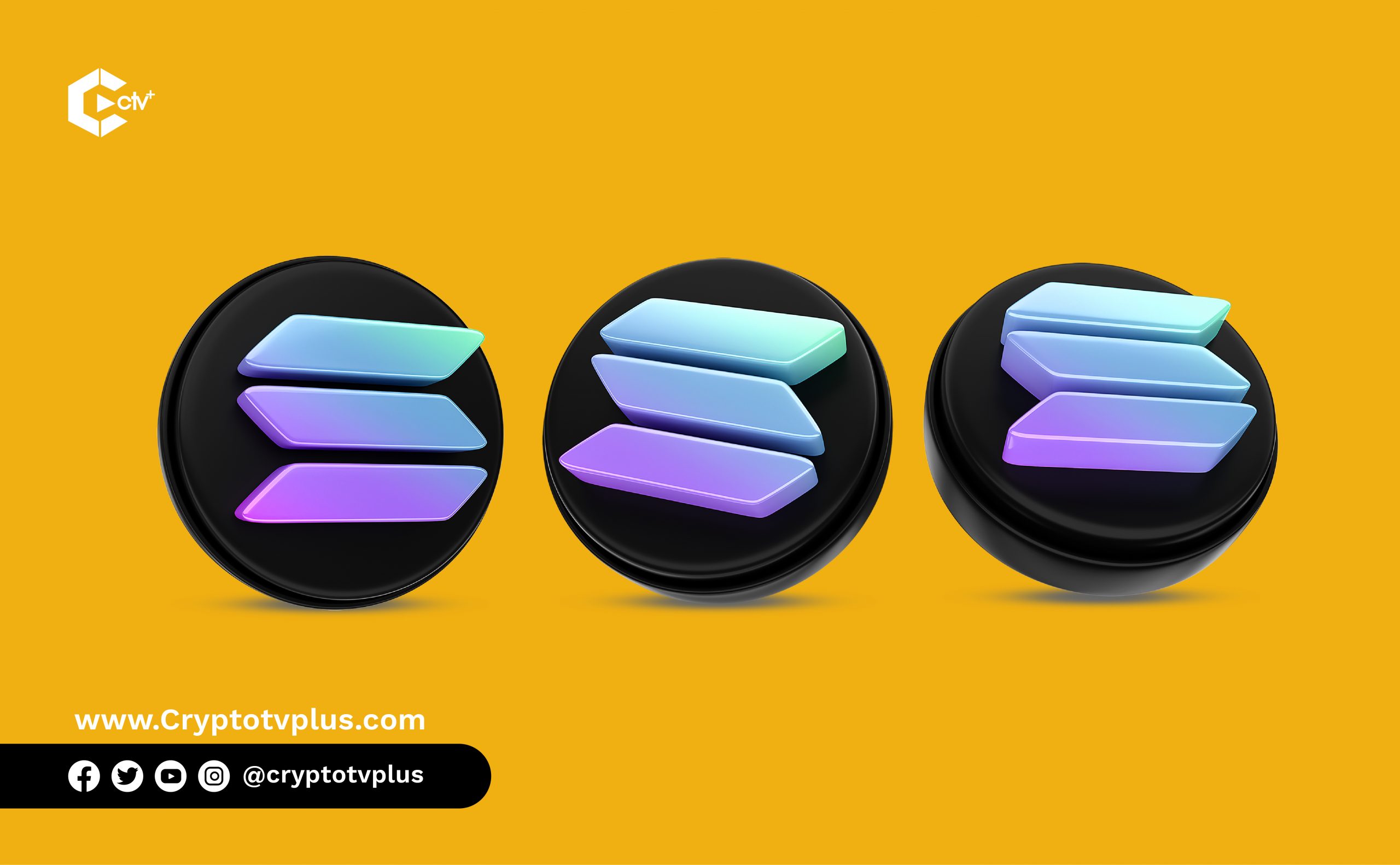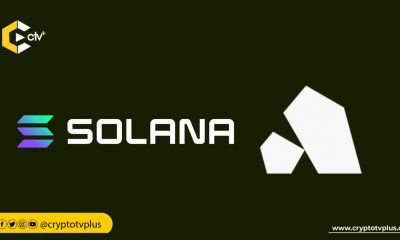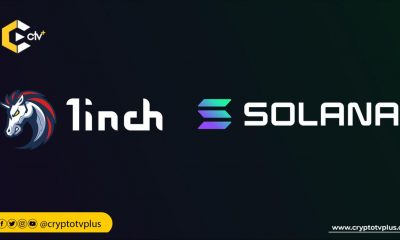FEATURED
Crypto Investing Outlook in 2022 – My View on DAOs, Metaverse, Regulation, & Rival Chains
Author: Nyce Ayuk

Last year, 2021 was a record year for the cryptocurrency market. Towards the end of the year, precisely by November 2021, it surpassed $3trillion in value with Bitcoin remaining on top as the cryptocurrency with the largest market value. The second-largest, ether, hit an all-time high while dogecoin surged in popularity.
Also, the year 2021 will be remembered as the year the first U.S. futures-based bitcoin ETF launched with the Pro-shares’ futures-based bitcoin making its debut on the New York Stock Exchange under the ticker “BITO”. It was a year of decentralized autonomous organizations, DAOs entered the mainstream. This was after ConsitutionDAO raised over $40million to buy a rare copy of the US constitution at auction. It was also the year that institutional adoption powered the bitcoin surge. El- Salvador became the first country to adopt Bitcoin as legal tender in September 2021. Also, Morgan Stanley, the 6th largest bank in the United States became the first bank in the United States to offer its customers the option of investing a portion of their funds into bitcoin.
Last year was a big year for non-fungible tokens (NFTs), the cryptocurrency tokens that represent ownership of a real-life object or a piece of digital art. Celebrity endorsements were a major factor behind this huge success.
2022 OUTLOOK
With many people still relieving cryptocurrency’s golden year (2021), what are the expectations/predictions for 2022? This year is sure to overshadow and outclass the extraordinary performance of crypto in 2021. I foresee actual adoption figures of over one billion crypto users. My prediction could not be more positive. Bitcoin’s price rose to $68, 521 in early November 2021 before dropping off sharply to below the $50,000 mark.
From a high of $4, 865, Ethereum is now trading around $3,183.66. Volatility is a feature within the cryptocurrency stratosphere and should not deter a committed trader/investor. I see a year of greater possibilities as the financial services’ tech revolution takes firm root. I advise everyone to invest a portion of their funds in crypto. You can start small 1-5% and then increase your investment portfolio in crypto, the same way you would with any asset.
Many experts have continued to pose this question: Is this the year that Bitcoin value finally reaches above $100,000? Wouldn’t be surprised. Before the end of this year, Bitcoin will take a decisive step in reaching that threshold. As digital natives take firm charge of the unfolding technological revolution, their market share of digital assets will take an astronomical leap.
This year, the answer as to whether Bitcoin will consolidate its 60% gain in 2021 with another blitzkrieg performance this year will be determined by a variety of factors; chief among those factors is to what extent Fed in the United States tighten policy to stem inflation. No matter how this breaks in the long term, Bitcoin will maintain its bullish stature with a decisive breakout to new highs of about $100,000 before the end of the year.
THE IMPACT OF CENTRAL BANKS AND THE METAVERSE
Central bank policies will be the number one influencer of Bitcoin and cryptocurrencies in 2022. The first point to be made is that cheap money is going nowhere and will surely continue to impact cryptocurrencies. The waves are sure to be rough but by and large crypto will ride those waves. New tokens such as Avalanche and Solana who were bullish in 2021 and recorded massive gains will stabilize and face the same scaling challenges faced by Ethereum and other older protocols this year. Metaverse has a lot of potential and will definitely be one of the superlative performers of this year. For sure, crypto will face a much more challenging environment this year shaped in part, by the commencement of interest rate normalization by the Federal Reserve of the United States and other major central banks in Europe, Asia, and the rest of the world.
DAOS SET FOR EXPONENTIAL GROWTH
Decentralized Autonomous Organizations (DAOs) are community-led entities with no central authority. Its importance hinges on it becoming a primary method that will enable businesses to access finance without really relying on traditional financing governed by corporate rules.
This year, it is on the cusp of something special. I believe that DAOs and metaverse will rise to prominence this year and that major tools for DAOs will be a major area of growth. The adoption of metaverse will be on the rise powered by the rush by major corporations to join the virtual gold rush.
After PleasrDAO, ConstitutionDAO, BlockbursterDAO, and FreeRossDAO, there will be more examples of people coming together to coordinate at scale through blockchain this year. I think that DAOs will devote greater attention to important causes. For instance, political campaigns could be transformed by DAOs.
This year will certainly unleash the full potential of DAOs as more individuals and businesses will collaborate with such organizations.
APP STORE WILL HAPPEN FOR CRYPTO
Consumers love platforms. Presently, no crypto platform owns the customer relationship and aggregates suppliers. It is therefore understandable that the race is already on to be the app store for crypto. This year, many companies will compete to build this platform. Already, Coinbase is in the lead as it integrates DeFi and NFTs.
CRYPTOCURRENCY REGULATION
Hanging over the cryptocurrency space is the threat of more regulation. This year, there will be more plans in the works from Washington D. C., Europe, and across the world about cryptocurrency regulation. Central banks will continue to tinker with existing laws and come up with new guidelines that will make cryptocurrency safer for both traders and investors. These regulations are envisioned to make cryptocurrencies less susceptible to attacks by cybercriminals.
Only in September last year, did the Chinese authorities declare that all cryptocurrency transactions in China were illegal. While the United States has no intention of banning cryptocurrency, the US authorities are more likely to put in place, stricter regulations to insulate traders and investors from getting hurt.
Biden’s $1.2trillion Infrastructure bill signed in November last year includes crypto tax reporting provisions that will make it easier for the FIRS to track crypto activities among Americans. Stricter regulations mean that investors/traders should learn to keep all records of capital gains and losses on their crypto assets.
The volatility of the crypto market is the reason why there is a convergence of opinion to the effect that one should keep cryptocurrency investments to less than 5% of your total portfolio. In effect, never invest anything that will unsettle you should you incur a loss. Regulatory announcements may inject further volatility and affect the price of cryptocurrencies. Everything taken into consideration, I believe that regulation is a good thing for the industry as it will give people more confidence in cryptocurrency.
INSTITUTIONAL CRYPTOCURRENCY ADOPTION
In 2021, mainstream companies took a greater interest in cryptocurrency with some of them investing in it. Fintech companies such as PayPal and Square are already allowing users access to crypto on their platforms. Tesla holds billions in crypto assets. The truth is that crypto has witnessed a tremendous amount of interest and this interest will be sustained even more this year. It will be one of the major engines of growth for the industry this year.
This year, bigger corporations with global stature will adopt Bitcoin and possibly other cryptocurrencies payments. AMC has already made the big announcement that it will accept Bitcoin payments by the end of this year. Global behemoths like Amazon and Walmart are already making moves that suggest that it is ready to get involved in crypto in a big way. This could be the game-changer that would ultimately create a chain reaction that will be good for cryptocurrency, unleashing in the process, the greatest wealth transfer in history.
ETHEREUM “KILLERS” (RIVALS) IN 2022
Last year, the market cap for Ethereum, the second-largest cryptocurrency stood at a staggering $445billion after a year of monstrous performance. However, its dominance is facing a stiff challenge from upcoming blockchains that made a strong showing last year.
And as these “Ethereum Killers” as they have come to be described by some experts accelerate their unrelenting challenge, the battle for dominance will intensify this year. Interestingly, one common feature among them is that they have technical advantages over Ethereum.
Ethereum has established a reputation as a powerful computing platform but its downside is that its transactions are seen as slow and costly. Rival cryptocurrencies are challenging Ethereum’s market position and dominance by offering faster transactions with lower gas fees (transaction fees). The vision behind Ethereum is to provide immutable blockchain ledgers to a variety of decentralized applications(dApps) with low fees and faster transactions.
The underlisted ‘Ethereum Killers” are offering lower gas fees and faster transactions. They are becoming increasingly more competitive and this year will remain a potent threat to Ethereum’s hitherto unchallenged dominance.
Avalanche (AVAX)

Arguably, the quickest smart contracts platform for decentralized apps in the open-source blockchain industry, Avalanche can handle 6,500 transactions per second; in contrast, Ethereum handles only 13 within the same period.
As against the proof-of-work blockchain architecture used by Ethereum and bitcoin, Avalanche uses a blockchain system known as proof-of-sake. Transactions here are settled by consensus among verified holders of the cryptocurrency to be transacted resulting in lower energy consumption and a more scalable system.
The final cost per transaction is approximately one-tenth of Ethereum’s fees for a similar transaction. So, it is low-cost, super-fast, and enables smart contract-enabled apps to outperform their competition. The AVAX token is a hard-capped scarce asset and can provide a unit of account between the multiple subnets created on Avalanche.
Cardano
Recent figures are telling. Around the middle of January this year, Cardano’s ADA token surged 30% according to CoinGecko. Meanwhile, the prices of Ethereum and Bitcoin, XRP, Solana advanced less than 5%. Within the same period, Cardano’s 24-hour transaction volume stood at $5.31billion, Ethereum $5.59billion. The interesting part of the story is that while Cardano’s gas fees were around $75,400, Ethereum commanded a whopping $44 million cost over the same period.
Skeptics argue that it is only a matter of time before the low gas fees enjoyed so far by Cardano will rise astronomically but this dire prediction is yet to come to pass. With an enthusiastic fan base, less than salutary comments by some experts positing that Cardano may not have traction with devs may remain a pipedream.
Despite its ups and downs, last year which saw its market value plummet, Cardano’s reputation as Ethereum’s nemesis remains strong. This reputation is buoyed by an enthusiastic Cardano community, recent positive developments in its decentralized finance, non-fungible tokens, and the metaverse. Also, the progress it recorded on scaling has helped to drive optimism around Cardano.
Solana

Bull’s hope that Solana is the Ethereum Killer. This network relies on proof-of-stake in association with a unique layer called proof-of-history to function. Rather than constantly communicating with other validators, the Solana network records and settles transactions based on ultra-precise timestamps.
The pace of the performance is blistering; this network can process about 50,000 transactions per second with each of the transactions completed in real-time. The fee per transaction is $0.00025 at present is incredibly low. Ethereum should watch its back because Solana is coming. Developed in 2017, Solana is now the fourth most popular cryptocurrency on Coinbase with a $54billion market cap.
It matches up well with Ethereum in speed and low transaction costs. It is gaining momentum and traction with developers with more than 400 projects. At the moment, this may not compare with where Ethereum is but the thing to note is that Ethereum rose steadily over time but much of Solana’s surge happened in the last six months.
Binance Smart Chain (BSC)
BSC is an alternative DeFi platform operated by Binance, the leading crypto exchange. Last year, this smart chain grew in value seventeen times and placed third in terms of capitalization, bested only by bitcoin and Ether. This rally was predicated on the mass exodus of users from Ethereum to DeFi operating on the Binance Smart Chain.
Users demand low-cost DeFi products which Uniswap, the Ethereum based decentralized crypto exchange is unable to offer. The cost of making a transfer on Uniswap has soared to double digits; a simple transfer from a single wallet costs a user $10-15.
BSC was the first alternative ecosystem to take market shares from Ethereum. And as the smart contract blockchain war heats up, Binance is aiming for total domination.
DOT (Polkadot)

As an alternative coin, Polkadot seeks to integrate different blockchains by creating a network that connects them all. While it aims to solve some of Ethereum’s scalability and cost issues, Polkadot is strongest in its interoperability processes because it enables blockchains to communicate effectively. DOT is technologically ambitious and since its release in April 2020 by Parity Labs, it quickly gained traction.
Like Ethereum, it supports dApps, NFTs, and more. Some experts maintain that Polkadot is building what they have described as “an internet of blockchains”. Compared to about 4000 active open-source developers on Ethereum, 1,500 work for Polkadot, thus making it the home to the second-highest number of full–time developers working across all blockchains. According to some experts, the potential for Polkadot to surpass Ethereum in the total number of developers is real.
Terra Luna

Terra is made up of a variety of “stable coins” running on the Terra network. The Terra protocol is an open-source blockchain that operates a proof-at-stake model on the stable coin’s ecosystem. These stable coins (cryptocurrency where the price is pegged to another fiat pair) are backed by other fiat cryptocurrencies or metals (Gold, silver, etc). On the other hand, the Luna token is the native governance token that is used on the network itself.
The ambition of the Terra Luna protocol is to function as a central bank for cryptocurrencies by offering stability. They have already built a hub where stable coins, traditional currencies, and volatile tokens can function as one hybrid mechanism. It achieved this with the help of smart contracts and stable coins algorithms.
This year its prospect is bright. Last year, the total value locked (TVL) in DeFi was more than $100b with most of the value coming from Ethereum. The second highest TVL amount of over $20 billion was locked in Terra Luna smart chain.
What do you think of this article? Share your comments below.























Pingback: Crypto Investing Outlook in 2022 – My View on DAOs, Metaverse, Regulation, & Rival Chains – Crypto Watch Daily
Pingback: Crypto Investing Outlook in 2022 – My View on DAOs, Metaverse, Regulation, & Rival Chains by Crypto TV Plus – CryptoTvplus Events: NFT, DeFi, Bitcoin, Ethereum, Altcoin Events
Pingback: Crypto Investing Outlook in 2022 – My View on DAOs, Metaverse, Regulation, & Rival Chains - Trig Finance
Pingback: Crypto Investing Outlook in 2022 – My View on DAOs, Metaverse, Regulation, & Rival Chains – Fantom Millionaire
Pingback: This Was Why $LUNA Pumped Massively Today | CryptoTvplus: DeFi, NFT, Bitcoin, Ethereum Altcoin, Cryptocurrency & Blockchain News, Interviews, Research, Shows
Pingback: This Was Why $LUNA Pumped Massively | CryptoTvplus: DeFi, NFT, Bitcoin, Ethereum Altcoin, Cryptocurrency & Blockchain News, Interviews, Research, Shows
Pingback: This is Why $LUNA is Pumping Massively – Crypto Watch Daily